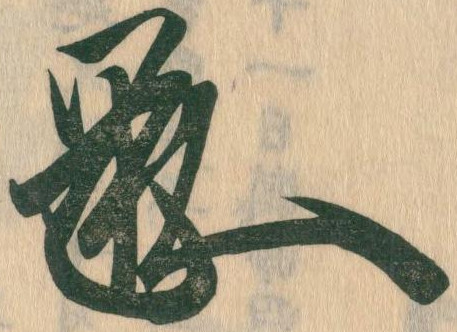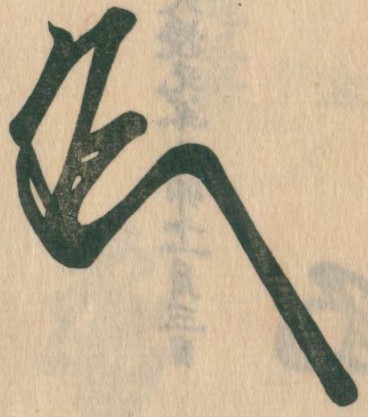|
Hōjō Mototoki
was the thirteenth ''Shikken'' (1315–1316) of the Kamakura shogunate The was the feudal military government of Japan during the Kamakura period from 1185 to 1333. Nussbaum, Louis-Frédéric. (2005)"''Kamakura-jidai''"in ''Japan Encyclopedia'', p. 459. The Kamakura shogunate was established by Minamoto no .... 1333 deaths 1286 births Hōjō clan People of Kamakura-period Japan {{Japan-noble-stub ... [...More Info...] [...Related Items...] OR: [Wikipedia] [Google] [Baidu] |
Shikken
The was a titular post held by a member of the Hōjō clan, officially a regent of the shogunate, from 1199 to 1333, during the Kamakura period, and so he was head of the ''bakufu'' (shogunate). It was part of the era referred to as . During roughly the first half of that period, the ''shikken'' was the ''de facto'' military dictator of Japan (not including the independent Northern Fujiwara). The title of ''shikken'' was modified, as second in command to the '' Tokusō'' in 1256, but by the Muromachi period (1333–1573) the position, though not abolished, did not even figure in the top ranks. The position ceased to exist after the Muromachi period. Etymology The word ''shikken'' is the on'yomi reading of the combination of the two kanji characters and , each meaning "to hold (something in the hand, or a service or ceremony); to administer", "power, authority" respectively. Therefore the word literally means "to hold power/authority". ''Shikken'' as supreme ruler (1199–1256 ... [...More Info...] [...Related Items...] OR: [Wikipedia] [Google] [Baidu] |
Emperor Hanazono
was the 95th emperor of Japan, according to the traditional order of succession. His reign spanned the years from 1308 through 1318. Genealogy Before his ascension to the Chrysanthemum Throne, his personal name (his ''imina'') was Tomihito''-shinnō'' (富仁親王). He was the fourth son of the 92nd Emperor, Fushimi. He belonged to the ''Jimyōin-tō'' branch of the Imperial Family. *Consort: Ogimachi Michiko (正親町実子) later Senkomon’in (宣光門院, 1297–1360), Ogimachi Saneakira’s daughter ** First Daughter: Imperial Princess Hisako (1318–1358; 寿子内親王) later Kianmon-in (徽安門院), married Emperor Kogon ** Second Son: Imperial Prince Nobunaga (業永親王; 1327–1353) later Imperial Prince priest Genshi (源性入道親王) ** Third son: Imperial Prince Naohito (直仁親王; 1335–1398) ** Daughter: Imperial Princess Noriko (儀子内親王; d. 1348) ** Priest Shōgoin ** Daughter married to Kazan’in clan *Consort: Ichijo-no-Tsubone (d ... [...More Info...] [...Related Items...] OR: [Wikipedia] [Google] [Baidu] |
Hōjō Hirotoki
was the twelfth ''Shikken'' (1312–1315) of the Kamakura shogunate The was the feudal military government of Japan during the Kamakura period from 1185 to 1333. Nussbaum, Louis-Frédéric. (2005)"''Kamakura-jidai''"in ''Japan Encyclopedia'', p. 459. The Kamakura shogunate was established by Minamoto no .... Bibliography * * 1279 births 1315 deaths Hōjō clan People of Kamakura-period Japan {{Japan-noble-stub ... [...More Info...] [...Related Items...] OR: [Wikipedia] [Google] [Baidu] |
Hōjō Takatoki
was the last '' Tokusō'' and ruling Shikken (regent) of Japan's Kamakura shogunate; the rulers that followed were his puppets. A member of the Hōjō clan, he was the son of Hōjō Sadatoki, and was preceded as ''shikken'' by Hōjō Morotoki. Biography Takatoki became regent at the age of eight, and thus actual power was held for a time by Adachi Tokiaki, his grandmother, and Nagasaki Takasuke, a minister assigned to him. Takatoki fell ill in 1326, at the age of twenty-three, some time after having taken power himself; the shogunate was under attack at this time, and would fall within a few years. Takatoki retired and became a Buddhist monk, though he still held some influence at shogunate. That same year, the shogunal government asked Emperor Go-Daigo to abdicate in favor of his successor, in order to continue the tradition of cloistered rule and the alternation of branches of the Imperial family within the line of succession; Go-Daigo chose to maintain rule, and the ensuin ... [...More Info...] [...Related Items...] OR: [Wikipedia] [Google] [Baidu] |
Shōgun
, officially , was the title of the military dictators of Japan during most of the period spanning from 1185 to 1868. Nominally appointed by the Emperor, shoguns were usually the de facto rulers of the country, though during part of the Kamakura period, shoguns were themselves figureheads, with real power in hands of the Shikken of the Hōjō clan. The office of shogun was in practice hereditary, though over the course of the history of Japan several different clans held the position. The title was originally held by military commanders during Heian period in the eighth and ninth centuries. When Minamoto no Yoritomo gained political ascendency over Japan in 1185, the title was revived to regularize his position, making him the first shogun in the usually understood sense. The shogun's officials were collectively referred to as the ; they were the ones who carried out the actual duties of administration, while the Imperial court retained only nominal authority.Beasley, Willi ... [...More Info...] [...Related Items...] OR: [Wikipedia] [Google] [Baidu] |
Prince Morikuni
was the ninth ''shōgun'' of the Kamakura shogunate of Japan. He was a son of the eighth ''shōgun'' Prince Hisaaki and was a grandson of the Emperor Go-Fukakusa. He was also a puppet ruler controlled by Hōjō Takatoki, who was the Kamakura shogunate's ''shikken'' or chief minister. His mother was daughter of Prince Koreyasu who died in 1306. After the collapse of the Kamakura bakufu, he became a Buddhist priest. He died shortly afterwards. The Kamakura shogunate was succeeded by the Kenmu Restoration. Eras of Morikuni's ''bakufu'' The years in which Morikuni was ''shōgun'' are more specifically identified by more than one era name or ''nengō''.Titsingh, Isaac. (1834). :Pre''-Nanboku-chō'' court * '' Enkyō'' (1308–1311) * ''Ōchō'' (1311–1312) * '' Shōwa'' (1312–1317) * ''Bunpō'' (1317–1319) * ''Gen'ō'' (1319–1321) * '' Genkō'' (1321–1324) * ''Shōchū'' (1324–1326) * '' Karyaku''(1326–1329) * '' Gentoku'' (1329–1331) * '' Genkō'' (1331–1334) ... [...More Info...] [...Related Items...] OR: [Wikipedia] [Google] [Baidu] |
Rensho
The was the assistant to the ''shikken'' (regent) of the Kamakura shogunate in Japan.Iwanami Kōjien, "Rensho" The rensho placed his signature next to that of the ''shikken'' on official orders. In 1224 the third ''shikken'' Hōjō Yasutoki appointed Hōjō Tokifusa as the first ''rensho''. From then on, the ''rensho'' was chosen from influential members of the Hōjō clan, but not from the main line of the clan ('' tokusō''), with the one exception of Tokimune, who temporarily occupied the position from 1264 to 1268. List of Rensho ''Note: There are three Hōjō Shigetoki's, all different people'' #Hōjō Tokifusa (r. 1225–1240) # Hōjō Shigetoki (北条重時) (r. 1247–1256) #Hōjō Masamura (r. 1256–1264) # Hōjō Tokimune (r. 1264–1268) #Hōjō Masamura (r. 1268–1273) # Hōjō Yoshimasa (r. 1273–1277) # Hōjō Shigetoki (北条業時) (r. 1283–1287) #Hōjō Nobutoki aka Osaragi Nobutoki (r. 1287–1301) # Hōjō Tokimura (r. 1 ... [...More Info...] [...Related Items...] OR: [Wikipedia] [Google] [Baidu] |
Hōjō Sadaaki
was the 12th ''rensho'' (1315–1326) and 15th ''shikken'' (19 April 1326 – 29 April 1326) of the Kamakura shogunate The was the feudal military government of Japan during the Kamakura period from 1185 to 1333. Nussbaum, Louis-Frédéric. (2005)"''Kamakura-jidai''"in ''Japan Encyclopedia'', p. 459. The Kamakura shogunate was established by Minamoto no .... References {{DEFAULTSORT:Hojo Sadaaki Hōjō clan 1278 births 1333 deaths Regents of Japan People of Kamakura-period Japan ... [...More Info...] [...Related Items...] OR: [Wikipedia] [Google] [Baidu] |
Hōjō Sadatoki
was the ninth ''shikken'' (regent) of the Kamakura shogunate (reigned 1284–1301), and '' tokusō'' (''de facto'' ruler of Japan) from his appointment as regent until his death. Born to the regent Tokimune and his wife from the Adachi family, Sadatoki became a ''shikken'' at age 14 upon the death of his father. Sadatoki was under the guardianship of Taira no Yoritsuna. Shimotsuki Incident The Hōjō clan had variously defeated many rival families, leaving only the Adachi clan, with whom the Hōjōs were allies. However, a plot by Adachi Yasumori to usurp the Hōjō resulted in Sadatoki authorizing Taira no Yoritsuna to attack the Adachi. It is possible Taira no Yoritsuna may have falsified the charges against Yasumori due to political rivalry. The attack occurred in November 1285 and is known as the Shimotsuki (old Japanese name for November) Incident. It was fought near the Adachi residence, and the Adachi were caught unaware. The fighting lasted five hours and Yasumori w ... [...More Info...] [...Related Items...] OR: [Wikipedia] [Google] [Baidu] |
Kamakura Shogunate
The was the feudal military government of Japan during the Kamakura period from 1185 to 1333. Nussbaum, Louis-Frédéric. (2005)"''Kamakura-jidai''"in ''Japan Encyclopedia'', p. 459. The Kamakura shogunate was established by Minamoto no Yoritomo after victory in the Genpei War and appointing himself as ''shōgun''. Yoritomo governed Japan as military dictator from the eastern city of Kamakura with the emperor of Japan and his Imperial Court in the official capital city of Heian-kyō (Kyoto) as figureheads. The Kamakura ''shōguns'' were members of the Minamoto clan until 1226, the Fujiwara clan until 1252, and the last six were minor princes of the imperial family.Nussbaum"Minamoto"at pp. 632–633. The Hōjō clan were the ''de facto'' rulers of Japan as '' shikken'' (regent) of the ''shōgun'' from 1203.Nussbaum"Fujiwara"at pp. 200–201. The Kamakura shogunate saw the Jōkyū War in 1221 and the Mongol invasions of Japan under Kublai Khan in 1274 and 1281. The ... [...More Info...] [...Related Items...] OR: [Wikipedia] [Google] [Baidu] |
Rokuhara Tandai
was the post of the chiefs of the Kamakura shogunate in Kyoto whose agency, the , kept responsibility for security in Kinai and judicial affairs on western Japan, and negotiated with the imperial court. Despite keeping security, the Rokuhara were also a sort of secret police and widely feared.森幸夫 『六波羅探題の研究』(続群書類従完成会、2005年4月) Rokuhara Tandai was set up after the Jōkyū Incident in 1221. The two chiefs were called and . Kitakata was higher-ranking than Minamikata. Like ''shikken'' and '' rensho'', both posts were monopolized by the Hōjō clan. The agency was destroyed with the fall of Kamakura shogunate in 1333. List of Rokuhara Tandai Kitakata #Hōjō Yasutoki (r. 1221–1224) #Hōjō Tokiuji (r. 1224–1230) # Hōjō Shigetoki (r. 1230–1247) #Hōjō Nagatoki (r. 1247–1256) #Hōjō Tokimochi (r. 1256–1270) #Hōjō Yoshimune (r. 1271–1276) # Hōjō Tokimura (r. 1277–1287) #Hōjō Kanetoki (r. 1287–1293) #Hōj� ... [...More Info...] [...Related Items...] OR: [Wikipedia] [Google] [Baidu] |
Hōjō Munekata
Hojo or Hōjō may refer to: Hojo or HoJo: *Howard Johnson's, a U.S. chain of restaurants and hotels *A nickname for Howard Johnson (other), Howard Johnson *A nickname for Howard Jones (English musician), Howard Jones *A nickname for Howard Jones (American musician), Howard Jones *MGR-1 Honest John, the first nuclear-capable missile and a popular airframe for hobby modelers *Hojo, a supporting character in comic strip ''Mandrake the Magician'' *Professor Hojo, a non-playable character in the video game ''Final Fantasy VII'' Hōjō or Houjou: *Hōjō clan, a family of regents of the Kamakura Shogunate *Late Hōjō clan, daimyō in the Sengoku Period *Hōjō, Ehime, a city in Japan *Kashima Shinden Jikishinkage-ryū#Hōjō, Hōjō, one of the five kata of Kashima Shinden Jikishinkage-ryū *Hōjō, Tottori, a town in Japan (part of Hokuei) *Hōjō Tokiyuki (Scouting) (1858–1929), early Japanese Scouting notable *Hōjō (Inuyasha), a character in the manga and anime series ... [...More Info...] [...Related Items...] OR: [Wikipedia] [Google] [Baidu] |




